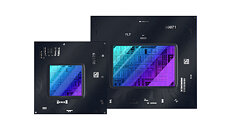
Supermicro Adds New 8U Universal GPU Server for AI Training, NVIDIA Omniverse, and Meta
Super Micro Computer, Inc. (SMCI), a global leader in enterprise computing, storage, networking solutions, and green computing technology, is announcing its most advanced GPU server, incorporating eight NVIDIA H100 Tensor Core GPUs. Due to its advanced airflow design, the new high-end GPU system will allow increased inlet temperatures, reducing a data center's overall Power Usage Effectiveness (PUE) while maintaining the absolute highest performance profile. In addition, Supermicro is expanding its GPU server lineup with this new Universal GPU server, which is already the largest in the industry. Supermicro now offers three distinct Universal GPU systems: the 4U,5U, and new 8U 8GPU server. The Universal GPU platforms support both current and future Intel and AMD CPUs -- up to 400 W, 350 W, and higher.
"Supermicro is leading the industry with an extremely flexible and high-performance GPU server, which features the powerful NVIDIA A100 and H100 GPU," said Charles Liang, president, and CEO, of Supermicro. "This new server will support the next generation of CPUs and GPUs and is designed with maximum cooling capacity using the same chassis. We constantly look for innovative ways to deliver total IT Solutions to our growing customer base."
"Supermicro is leading the industry with an extremely flexible and high-performance GPU server, which features the powerful NVIDIA A100 and H100 GPU," said Charles Liang, president, and CEO, of Supermicro. "This new server will support the next generation of CPUs and GPUs and is designed with maximum cooling capacity using the same chassis. We constantly look for innovative ways to deliver total IT Solutions to our growing customer base."





























































